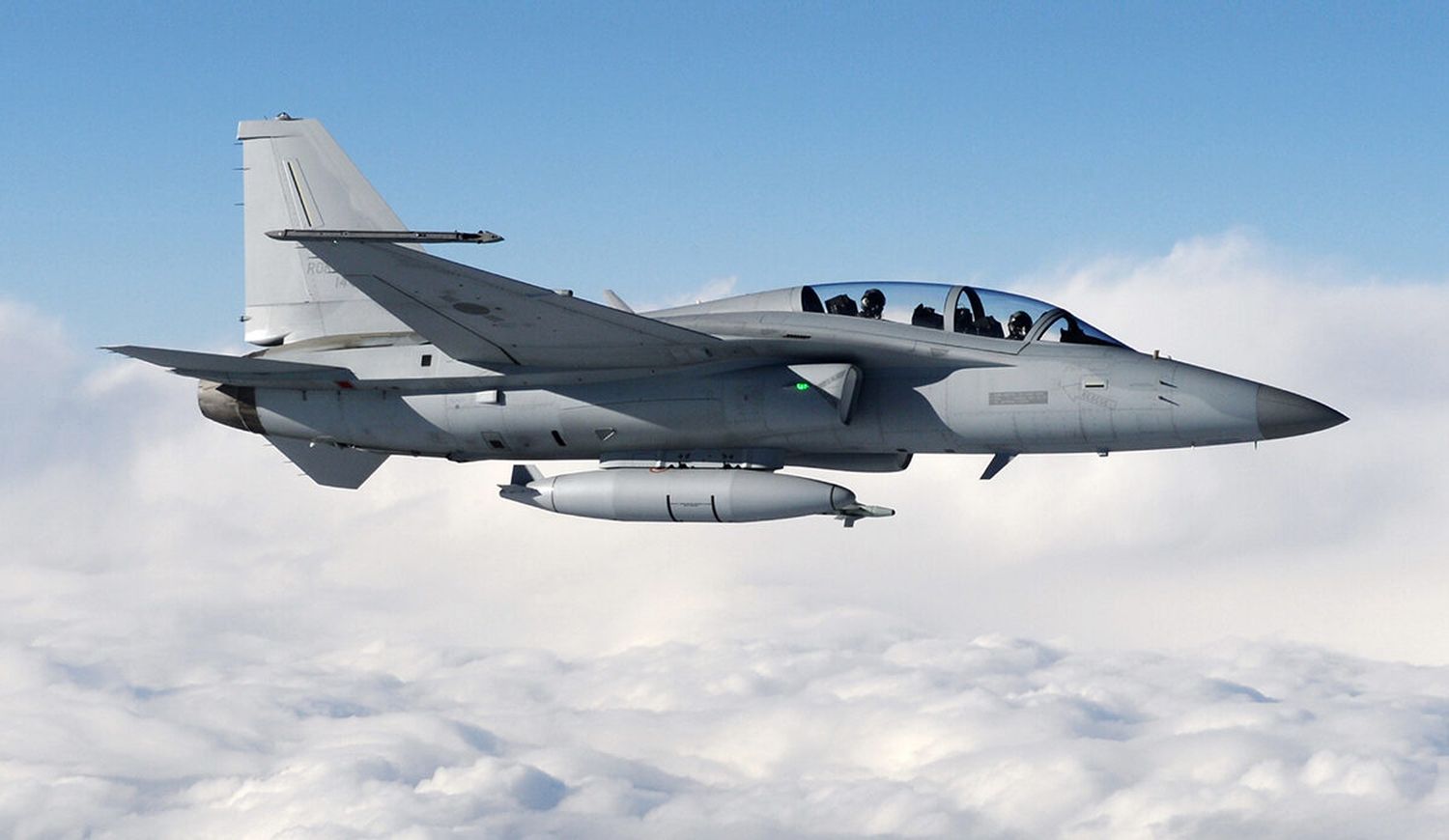Airbus Defence has reportedly proposed to South Korea a partnership to boost the export of the South Korean FA-50 and other aircraft to Western European countries.
According to Yonhap News, Michael Schoellhorn, CEO of Airbus Defence and Space, made the proposal during his meeting with South Korean Industry Minister Lee Chang-yang in Seoul to discuss ways to boost cooperation in aviation, space and other mobility sectors.
Airbus proposed a «win-win strategy» of exporting South Korean aircraft to Western European countries, in light of its agreement with Poland for the sale of FA-50 light attack aircraft and the successful flight testing of its domestically produced KF-21 fighter jet.
See also: Why did the FA-50 win in Poland? F-15EX and KF-21 on the horizon
In July, Korea Aerospace Industries (KAI), South Korea’s sole aircraft manufacturer, signed a $3 billion basic deal with Poland to export 48 FA-50 fighters, where it will serve as advanced trainer/LIFT and light combat aircraft, replacing the last legacy Soviet-era aircraft, such as the MiG-29.
Interestingly, Airbus had designed its own aircraft concept very similar to the FA-50, the AFJT.
The Airbus Future Jet Trainer, without much hope
The proposed Airbus Future Jet Trainer (AFJT), developed by the Airbus Spain division, is that of a single-engine, tandem cockpit, jet, fitted with lerx extensions and a sole vertical drift. The overall design was reminiscent of the former German EADS Mako, which never went beyond a mockup.

The idea was to develop a common aerodynamic base that, depending on the chosen configuration, would have versions of advanced trainer and/or LIFT, subsonic or supersonic, «aggressor» type trainer, light combat aircraft or an unmanned combat air vehicle (UCAV).
Airbus’ objective was to offer the AFJT to the Spanish Ministry of Defense as a replacement for the CASA C-101 and Northrop F-5 trainers. From there it could also be offered to France, which needs to replace part of its Alphajet and to Germany, which relies on the USAF’s T-38 Talon (AFB Shepard, Texas) to prepare its future fighter pilots.
But it seems that the Airbus proposal did not attract the attention of the European governments, and after the sale of the FA-50 to Poland, they must see in the small but effective Korean jet a much safer bet, since everything indicates that this aircraft will continue to gain markets in the short and medium term. In fact, KAI estimates that it can sell between 100 and 200 FA-50s in Europe, which partly explains Airbus Defence & Space’s interest.
The announcement also mentions, in rather vague terms, the promotion of «other (Korean) aircraft to Western European countries». In recent times South Korea has been promoting its FA-50 as a gateway to the future purchase (or participation in the program) of the KF-21 Boramae.
Is there a Plan B to FCAS… without France?
Could it be that Airbus wants to have a «Plan B», in case the FCAS program ends up failing?

On Friday, it was announced from Spain and Germany that an agreement had been reached so that the future European air combat system program could proceed to Phase 1B, after being held up for months by differences between Dassault and Airbus Defence, particularly over the division of the workload and the intellectual property rights that would be generated. However, from France comes only an uncomfortable silence. Neither the French government nor Dassault have expressed any opinion on the agreements to which all parties are supposed to have committed themselves.
And while, at this stage of development, the KF-21 Boramae is a much more humble fighter aircraft design than the FCAS project, it could serve as the basis for a much more advanced version, rivaling the F-35 and approaching the sixth-generation fighters.
It should be remembered that the KF-21 was intended by KAI to be an evolutionary design aircraft. The first production model, will be a 4.5 generation fighter, similar to a Eurofighter or Rafale, and then progressing, in successive batches, to a 5th generation aircraft, equivalent to an F-35 or F-22. KAI even announced that it plans to eventually equip the Boramae with some of the features of 6th generation fighters.
See also: The KF-21 Boramae will evolve until possess characteristics of sixth generation fighters

If the FCAS partnership ends up fracturing, leaving France on one side and Germany and Spain on the other, it would be good for Airbus to have an option at hand to jump in, because starting the whole process from scratch would be impossible. But for the KF-21 to be an alternative (even if it seems remote), it is probably a good idea to start with the FA-50.



Comentarios
Para comentar, debés estar registrado
Por favor, iniciá sesión